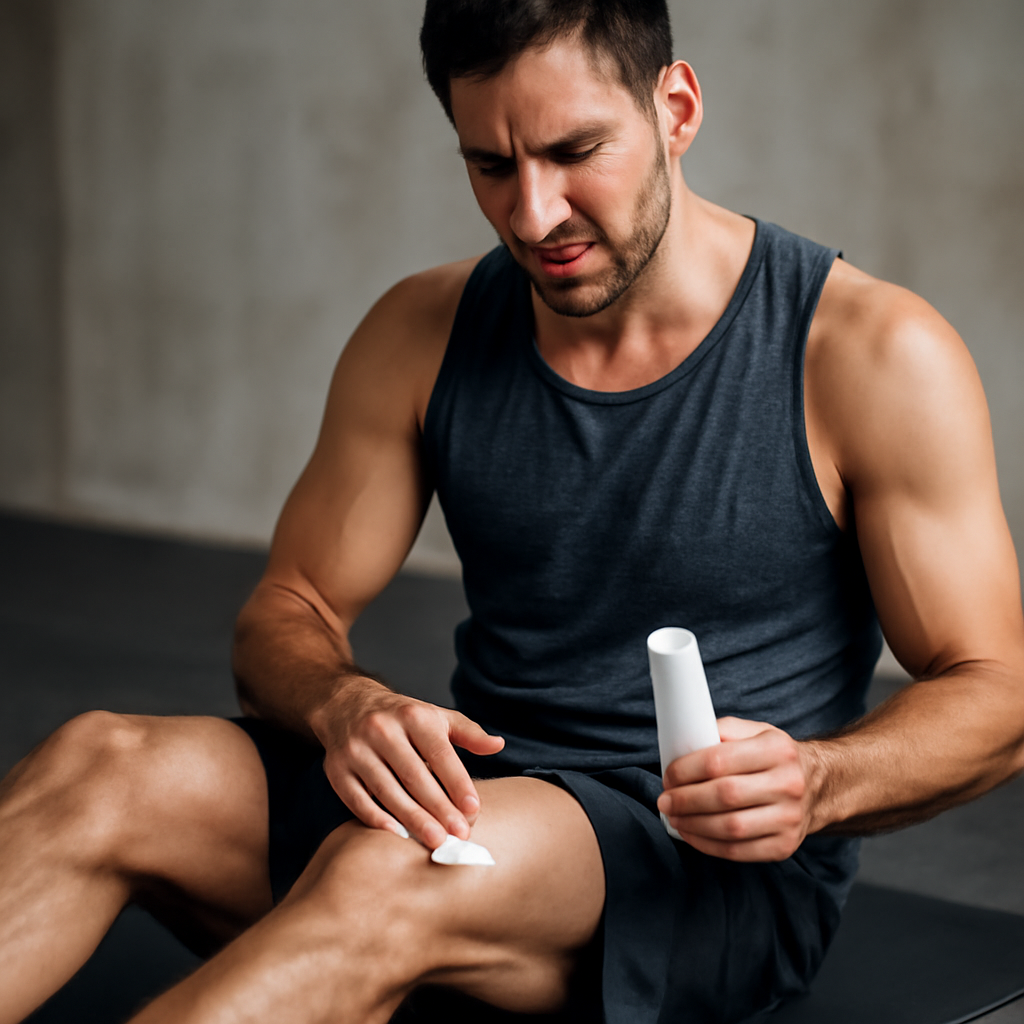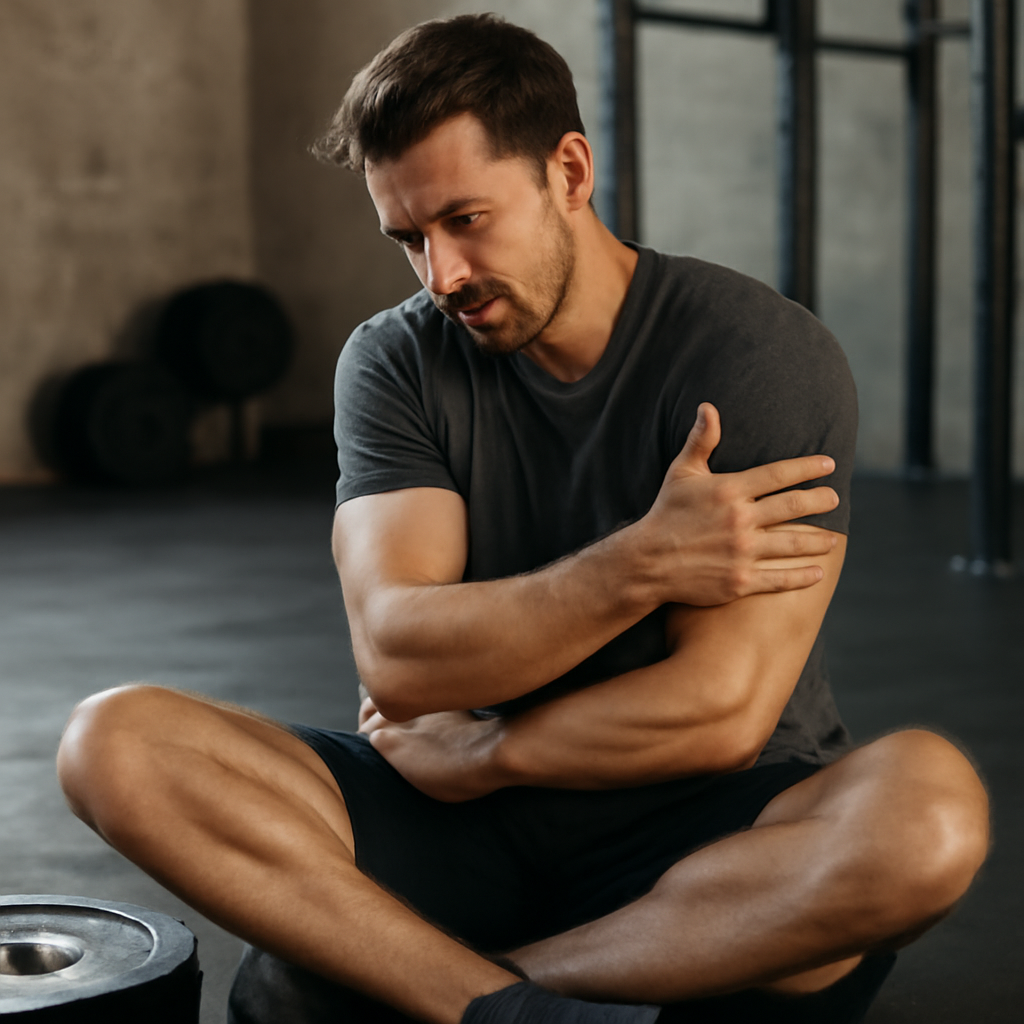Post Workout Muscle Soreness Explained: Effective Relief Strategies Using Neuropasil Nerve Pain Relief & Muscle Cream 4 Oz
Pain Relief
Recovery
Natural Formula
Whether you are smashing personal records, returning from a sports injury, or simply staying active, post workout muscle soreness can make even easy tasks like climbing stairs feel like a summit attempt, and understanding why it happens is the first step to relieving it quickly and safely. You will often hear people describe this ache as delayed onset muscle soreness (DOMS) [delayed onset muscle soreness], a normal response to training stress that peaks between 24 and 72 hours after unfamiliar or intense exercise and then gradually fades as your body adapts and grows stronger. Meanwhile, nerves, muscles, and joints all play roles in what you feel, which is why a comprehensive approach that pairs smart recovery habits with targeted topical support can make a real difference in comfort and performance. In this guide, we blend evidence-based strategies with insights into the Neuropasil Nerve Pain Relief & Muscle Cream 4 Oz formulation — a topical cream using natural aloe, urea, and menthol — to help you move with less pain and more confidence.
What Is Post Workout Muscle Soreness (Delayed Onset Muscle Soreness [DOMS])?
Post workout muscle soreness is your body’s normal adaptation to novel or high-load training, especially movements rich in eccentric contractions like downhill running, lowering a squat, or controlled pull-ups, where microscopic muscle fiber damage and temporary inflammation spark repair and growth. Contrary to a common myth, lactic acid is not to blame for lingering soreness, because blood lactate clears within an hour, while DOMS (delayed onset muscle soreness) [delayed onset muscle soreness] peaks 24 to 72 hours after exercise and is characterized by tenderness, stiffness, and reduced force output. Research in sports medicine journals suggests up to 60 to 70 percent of athletes report noticeable soreness after changing volume or intensity, with eccentric-heavy sessions increasing perceived soreness by 30 to 50 percent compared to concentric work. Because nerve endings in muscles and surrounding fascia become more sensitive during this period, a solution that soothes nerve pain, calms muscle pain, and reduces joint discomfort can help you resume daily activities sooner and maintain training momentum without overreaching.
- Typical signs: dull ache, stiffness, mild swelling, temporary drop in strength and range of motion.
- Not typical: sharp or radiating pain, visible deformation, significant joint instability, or numbness and tingling extending below the knee or elbow.
Why It Hurts: Nerves, Muscles, Joints, and Your Recovery Timeline
During recovery, immune cells clear debris while satellite cells help repair fibers, yet heightened sensitivity in peripheral nerves makes movement feel achy, and joint tissues that share load with sore muscles can feel stiff, especially after sitting. Most healthy adults notice improvement within three days, and light activity restores circulation, reduces swelling, and normalizes nerve sensitivity, whereas total rest often prolongs stiffness and delays return to usual training loads. Observational data show athletes who employ structured cooldowns, hydration with electrolytes, and adequate protein intake report 15 to 25 percent less perceived soreness across a training block, and those who track sleep maintain 10 to 20 percent better power output in subsequent sessions. Because pain is multifactorial, the most reliable plan is layered: combine movement, nourishment, and sleep with targeted topical relief that cools, soothes, and supports tissues that are sending the “too much” signal through sore nerves, achy muscles, and irritated joints.
Evidence-Based Relief: From Active Recovery to Topicals That Work

Relief is fastest when you blend gentle movement with localized care, so think of recovery as a toolkit where each tool does a specific job, from circulation-boosting walks to cooling creams that calm sensitive nerve endings and soothe sore tissues. Active recovery such as a 20 to 30 minute brisk walk, easy cycling, or mobility flows promotes blood flow without adding stress, and contrast showers or short cold exposure can reduce perceived soreness for a few hours by modulating nerve signaling. Light compression, hydration, protein-rich meals, and sleep hygiene further accelerate repair, while massage and foam rolling deliver short-term improvements in flexibility and comfort that make it easier to train again with good technique. For topical relief, many athletes value fast-acting formulas with menthol for cooling, aloe for skin-soothing hydration, and urea for gentle keratolytic support; the Neuropasil Nerve Pain Relief & Muscle Cream 4 Oz formulation was designed to target nerve pain, muscle pain, and joint pain, giving you an option that feels good within minutes and fits easily into pre- and post-session routines.
| Method | How It Helps | Best Timing | Evidence Snapshot | Notes |
|---|---|---|---|---|
| Active Recovery | Boosts blood flow, clears metabolites, normalizes nerve sensitivity | Day 1-3 after hard sessions | Consistent 10-20 percent perceived soreness reduction reported | Keep intensity low to moderate |
| Contrast or Cold | Temporarily reduces nerve conduction and swelling sensations | Within 0-24 hours; short bouts | Short-term relief in several studies; best combined with movement | Avoid prolonged extreme cold directly on skin |
| Topical Relief (Neuropasil Nerve Pain Relief & Muscle Cream 4 Oz) | Cooling menthol, soothing aloe, hydrating urea target sore areas | Before and after activity; as needed | Fast perceived relief; supports adherence to recovery routines | Non-greasy option for daily use |
| Compression | Limits swelling, improves venous return | During the day post-training | Small but meaningful comfort gains | Ensure proper fit to avoid numbness |
| Nutrition + Sleep | Supports repair and hormonal balance | Protein within 2 hours; 7-9 hours sleep | Large impact on recovery and performance consistency | Include electrolytes if you sweat heavily |
- Move: 20 minutes of easy cardio and mobility the day after your hardest session.
- Soothe: Apply the Neuropasil Nerve Pain Relief & Muscle Cream 4 Oz to tender areas for fast comfort.
- Nourish: Aim for 0.3 grams protein per kilogram body weight within two hours post-workout.
- Sleep: Protect 7 to 9 hours of quality sleep; your muscles remodel while you rest.
Neuropasil Nerve Pain Relief & Muscle Cream 4 Oz: How Aloe, Urea, and Menthol Work Together
Neuropasil Nerve Pain Relief & Muscle Cream 4 Oz pairs three natural allies for recovery: menthol provides an immediate cooling sensation that distracts from discomfort by activating TRPM8 channels, aloe supports skin comfort and hydration over tender zones, and urea helps condition the skin’s outer layer so the formula spreads evenly and feels smooth. This fast-acting pain relief cream is crafted for people who juggle training with everyday responsibilities, because it targets nerve, muscle, and joint pain in a single step you can repeat before or after activity without leaving residue. Athletes and active lifestyle users appreciate the quick comfort during the 24 to 72 hour soreness window, and people managing sciatica, tendonitis, or general muscle aches value that the same bottle covers multiple discomfort types. Pair the product with solid recovery habits and additional resources on pain relief, and you get both knowledge and value in a routine that helps you stay consistent through tough training blocks.
| Ingredient | Main Action | Comfort Focus | What You Feel |
|---|---|---|---|
| Menthol | Activates cooling receptors to reduce pain signaling | Nerve and muscle pain | Cooling relief within minutes |
| Aloe | Soothes and hydrates skin over sore tissues | Surface comfort, gentle calming | Soft, soothed feel without greasiness |
| Urea | Conditions the skin barrier for smooth application | Even coverage over joints and muscles | Light, absorbent texture that layers well |
Smart Training Habits to Prevent Excess Soreness

Progressive training respects biology: increase weekly load by 5 to 10 percent, prioritize technique over ego metrics, and sprinkle eccentric work gradually so tissues adapt without overwhelming nerve sensitivity. Warm-ups that move joints through full ranges and ramp heart rate for 8 to 12 minutes prepare muscles to accept force, while cooldowns that include easy walking and gentle stretches reduce the “cement legs” sensation later. Hydrate with 2 to 3 milliliters per kilogram of body weight in the hours before training, then sip electrolytes if you sweat heavily, and aim for 1.6 to 2.2 grams of protein per kilogram per day during hard blocks to fuel remodeling. Layer in a topical routine such as Neuropasil Nerve Pain Relief & Muscle Cream 4 Oz before and after your hardest sessions so small aches do not snowball into altered movement patterns that can irritate joints or flare nerve pain during daily tasks like sitting, driving, or lifting groceries.
Consider this simple case example: a recreational runner returned to hill sprints after time off and felt severe quad soreness that lasted four days, so they switched to a microcycle with one speed day, one strength day, and one long run, added easy cycling for active recovery, prioritized 30 grams of protein within two hours of workouts, and used Neuropasil Nerve Pain Relief & Muscle Cream 4 Oz on quads and knees before movement sessions. Within two weeks, perceived soreness dropped from 8 to 4 out of 10, and pace consistency improved because the runner no longer guarded with a shortened stride, which reduced joint stress and nerve irritability while maintaining fitness gains. Small changes, layered consistently, compound into sustainable comfort and better results, and the same approach works across sports from lifting to tennis to cycling, especially during transitions like preseason or return-to-play after a minor strain. You can adapt this template to your schedule, emphasizing tiny, repeatable steps over drastic shifts that your nervous system interprets as a threat.
When Soreness Signals Something Else and How to Respond
Most soreness is ordinary, but certain signals point to more than DOMS (delayed onset muscle soreness) [delayed onset muscle soreness], like sharp pain during a specific movement, tingling or numbness down a limb, visible swelling at a joint, or weakness that persists beyond a week. If you suspect sciatica, tendinopathy, or a sprain, scale back load, emphasize gentle movement you can perform without symptom spikes, and consult a licensed clinician for assessment and guidance tailored to your history and goals. People often ask about medications such as NSAIDs (nonsteroidal anti-inflammatory drugs) [nonsteroidal anti-inflammatory drugs]; these can blunt pain but may not be appropriate for everyone, so it is wise to discuss timing and dosage with a healthcare professional, especially during early tissue remodeling. In the meantime, supportive strategies like sleep, nutrition, and topical comfort from the Neuropasil Nerve Pain Relief & Muscle Cream 4 Oz formulation can make day-to-day tasks more manageable while you work on the underlying plan with your care team.
- Pause max-intensity work for 48 to 72 hours and test pain-free ranges first.
- Monitor symptoms: if they worsen daily, seek evaluation rather than training through it.
- Use layered relief: active recovery, hydration, gentle mobility, and targeted topicals.
- Return progressively: rebuild volume and intensity in small, measurable steps.
Here is the promise delivered: understand the science, apply layered strategies, and use natural topical support to tame soreness and keep training on track.
Imagine the next 12 months where your hardest sessions leave you satisfied, not sidelined, because you have a reliable routine for nerves, muscles, and joints that fits your life.
What would your week look like if post workout muscle soreness became something you manage with confidence rather than something that manages you?
Additional Resources
Explore these authoritative resources to dive deeper into post workout muscle soreness.
Relieve Soreness Faster With Neuropasil Nerve Pain Relief & Muscle Cream 4 Oz
Targets nerve, muscle, and joint pain, the Neuropasil Nerve Pain Relief & Muscle Cream 4 Oz provides targeted, fast-acting relief by combining soothing ingredients to alleviate pain for athletes and active people.
Soothe Soreness Now













